

Partner Thelma Wood
Queer Places:
Pratt Institute, 200 Willoughby Ave, Brooklyn, NY 11205, Stati Uniti
173 Boulevard Saint-Germain, 75006 Paris, France
Place Saint-Sulpice, 75006 Paris, France
9 Rue Saint-Romain, 75006 Paris
5
Patchin Place, Patchin Pl, New York, NY 10011, Stati Uniti
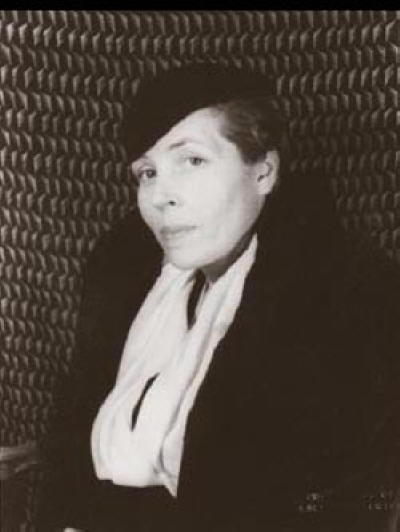 Djuna Barnes (June 12, 1892 – June 18, 1982) was an American writer and
artist best known for her novel Nightwood (1936), a cult classic of
lesbian fiction and an important work of modernist literature.[2]
Identified with the Lost Generation.
She satirized Natalie
Clifford Barney's lesbian circle in The Ladies Almanack. Barnes had many
lovers including the poet Mary Pyne,
the photographer Berenice Abbott, the
writer and collector
Peggy Guggenheim, Natalie
Clifford Barney, the Dada artist Baroness Elsa von
Freytag-Loringhoven, and, most importantly, sculptress
Thelma Wood.
Shipping heiress Bryher, the writer born
Winifred Ellerman, the only woman in the general milieu of European lesbians
richer than Natalie Barney,
gave money to Djuna Barnes,
Sylvia Beach,
Edith Sitwell and
Dorothy Richardson, among others.
Janet Flanner made certain that a
near-destitute Alice Toklas
did not want for necessities after
Gertrude Stein’s death; and she assisted
Djuna Barnes as well. Peggy
Guggenheim provided Djuna Barnes
with a grudging monthly allowance (ungratefully received) that helped sustain
her for the rest of her life.
Djuna Barnes (June 12, 1892 – June 18, 1982) was an American writer and
artist best known for her novel Nightwood (1936), a cult classic of
lesbian fiction and an important work of modernist literature.[2]
Identified with the Lost Generation.
She satirized Natalie
Clifford Barney's lesbian circle in The Ladies Almanack. Barnes had many
lovers including the poet Mary Pyne,
the photographer Berenice Abbott, the
writer and collector
Peggy Guggenheim, Natalie
Clifford Barney, the Dada artist Baroness Elsa von
Freytag-Loringhoven, and, most importantly, sculptress
Thelma Wood.
Shipping heiress Bryher, the writer born
Winifred Ellerman, the only woman in the general milieu of European lesbians
richer than Natalie Barney,
gave money to Djuna Barnes,
Sylvia Beach,
Edith Sitwell and
Dorothy Richardson, among others.
Janet Flanner made certain that a
near-destitute Alice Toklas
did not want for necessities after
Gertrude Stein’s death; and she assisted
Djuna Barnes as well. Peggy
Guggenheim provided Djuna Barnes
with a grudging monthly allowance (ungratefully received) that helped sustain
her for the rest of her life.
Djuna Barnes wrote a lively bagatelle called Ladies Almanack in 1928. Natalie Barney featured here as Dame Evangeline Musset; Romaine Brooks as Cynic Sal; Lily de Gramont as the Duchesse Clitoressa of Natescourt; Una Troubridge as Lady Buck-and-Balk; Radclyffe Hall as Tilly Tweed-in-blood; Mina Loy as Patience Scalpel; Mimì Franchetti as Senorita Fly-About; and Janet Flanner and Solita Solano as Nip and Tuck. The book was privately published by Robert McAlmon.
The relationships among Djuna Barnes, Emily Coleman, Antonia White, and Peggy Guggenheim were intense, sexually charged, emotionally intricate affairs that were, in turn, hurtful and inspiring, cruel and nurturing. Ultimately, however, these relationships were the most central to their writing. While men came and went in all of their lives, their relationships, replete with emotional brutality, persevered. Barnes called Coleman "a prima vera with blood on her lips", and White sometimes dismissed Coleman as mad. White and Coleman were fond of telling Barnes that she was shallow and couldn't analyze. However, aside from the black eye Coleman once gave Peggy Guggenheim, the most scathing criticism within the group was reserved for White. Barnes lamented to White that although she tried to like her writing, she just couldn't, and went on to tell White that she was a "bad, bad woman".
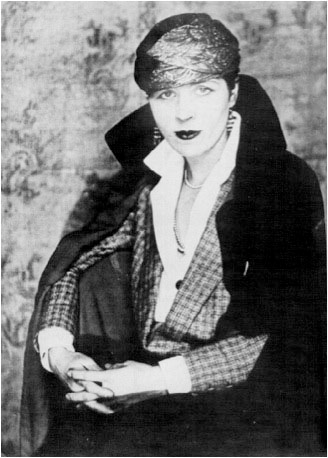
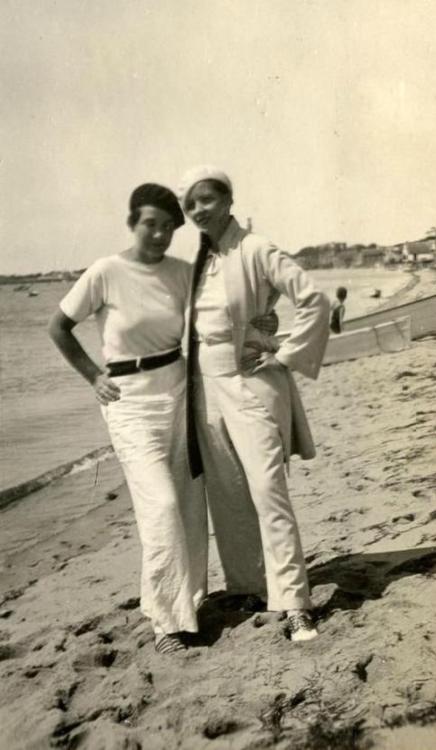
Djuna Barnes and Thelma Wood
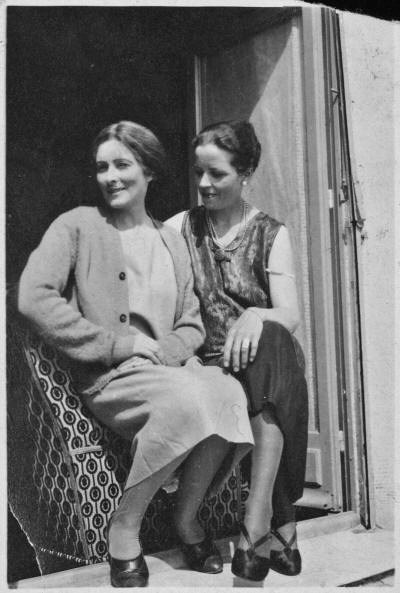
Mina Loy and Djuna Barnes
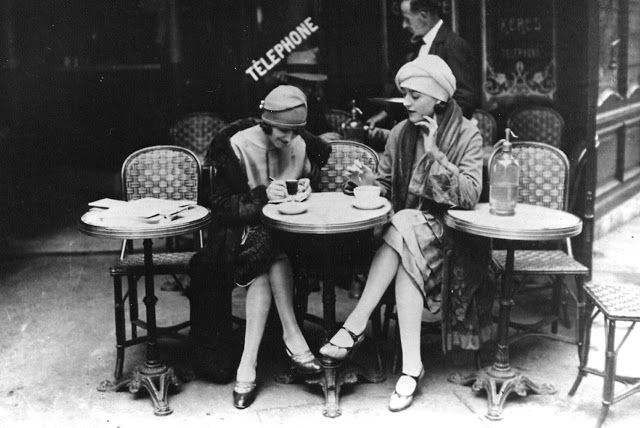
Solita Solano and Djuna Barnes
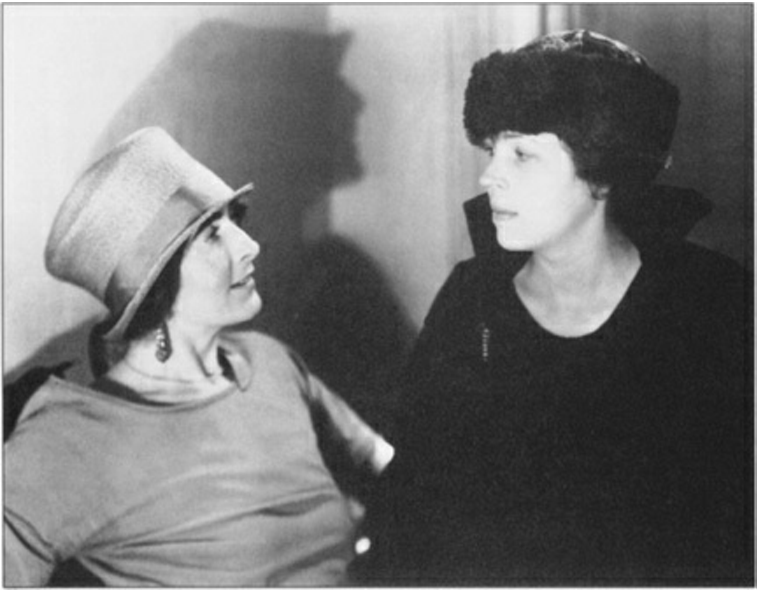
Mina Loy and Djuna Barnes by Man Ray

Djuna Barnes by Berenice Abbot
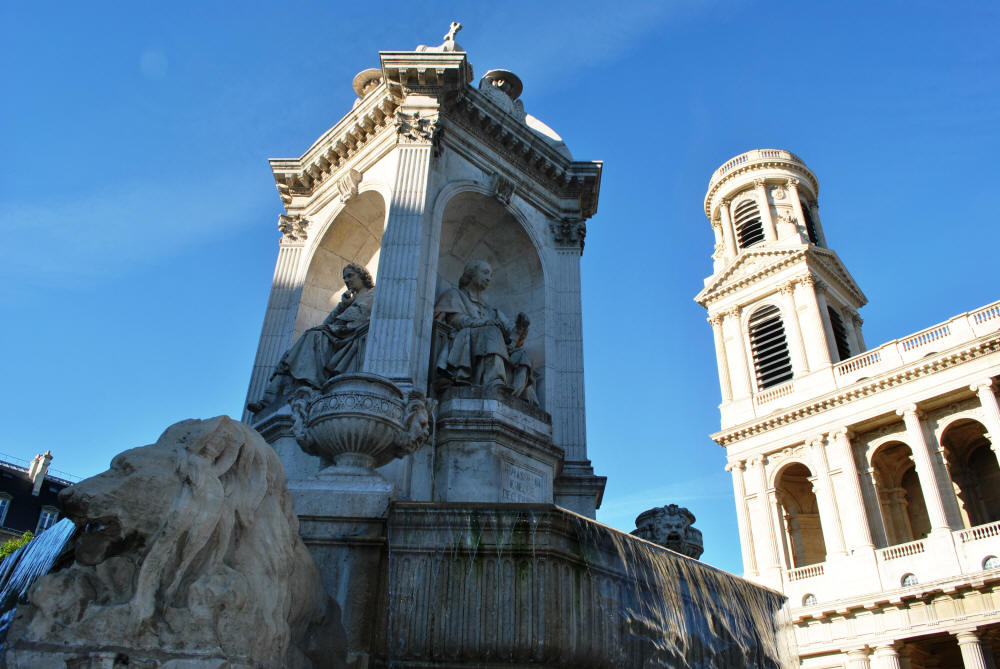
Place Saint-Sulpice
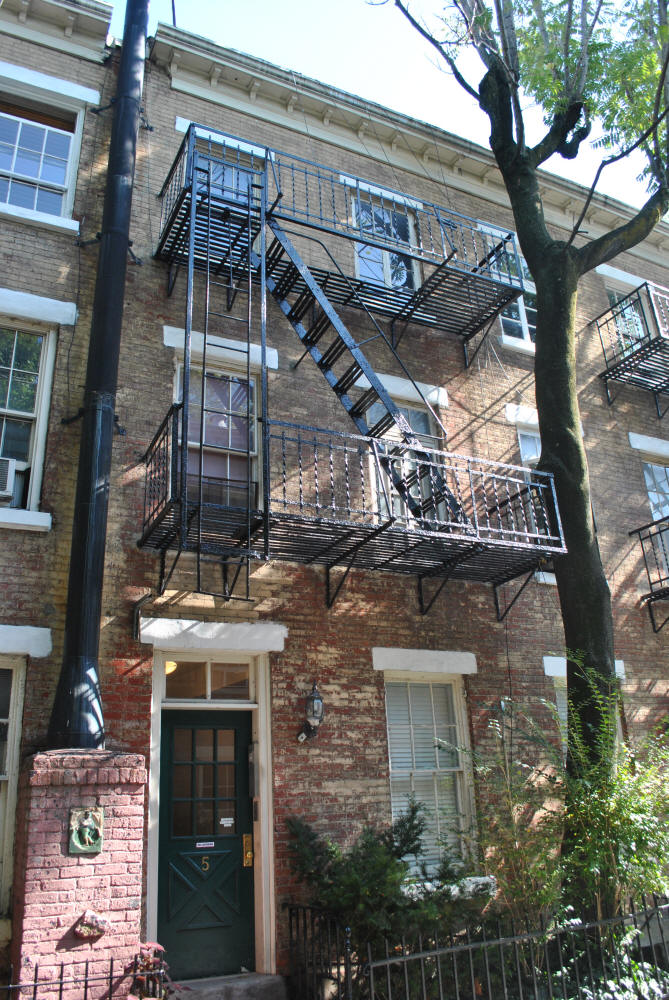
5 Patchin Place
Barnes, White, and Coleman speak at later points in their lives of having had sex with and being sexually attracted to other women. Djuna Barnes, of course, went on to have more love affairs with women. Emily Coleman would admit "the only genuine sexual feelings I have had were the Lesbian affair I had in 1929". Antonia White similarly later conceded that she desired a woman more than she had ever desired her husband. Among the four, Peggy Guggenheim was perhaps the most determinedly heterosexual. Even she, however, had female lovers throughout her life, including Djuna Barnes's great love, Thelma Wood, an attachment which would certainly seem to have exacerbated tensions between Bames and Guggenheim.
Historical homosocial and homosexual communities of expatriate American and English women lived in Paris on the Left Bank of the Seine during the opening decades of the twentieth century. The place and time has captured the imaginations of feminist and queer historians, literary critics, art historians, and cultural theorists. These histories of women and their cultural productions are attractive because they demand a rethinking and rewriting of the canonical histories of masculine modernism. The geographical and spiritual locus for these groups were the literary and artistic salons of Natalie Barney and Gertrude Stein, as well as the bookshops and publishing houses owned by Sylvia Beach and Adrienne Monnier. Congregating at these cultural landmarks, Janet Flanner, Colette, Renée Vivien, Djuna Barnes, Hilda Doolittle, Claude Cahun, Marcel Moore (Suzanne Malherbe), Anaïs Nin, and many others invented new ways of living and representing themselves and each other. Martha Vicinus writes: The most striking aspect of the lesbian coteries of the 1910s and 1920s was their self-conscious effort to create a new sexual language for themselves that included not only words but also gestures, costume and behavior. Lillian Faderman notes that these Parisian communities “functioned as a support group for lesbians to permit them to create a self-image which literature and society denied them.”
Barnes was born in Cornwall-on-Hudson, New York, to Elizabeth and Wald Barnes in the two-story cabin built by her father on his brother's estate at Storm King Mountain.
In 1913, Barnes began her career as a freelance journalist and illustrator for the Brooklyn Daily Eagle.[3] By early 1914, Barnes was a highly sought feature reporter, interviewer, and illustrator whose work appeared in the city’s leading newspapers and periodicals.[4] Later, Barnes’ talent and connections with prominent Greenwich Village bohemians afforded her the opportunity to publish her prose, poems, illustrations, and one-act plays in both avant-garde literary journals and popular magazines, and publish an illustrated volume of poetry, The Book of Repulsive Women (1915).[4][5] Subsequently she met the publishers of the Little Review, Margaret Anderson and Jane Heap, and had an affair with the latter.
After World War I she moved to the Greenwich Village where she met and lived with the sculptress Berenice Abbott. Barnes had also a passionate romantic relationship with Mary Pyne, a reporter for the New York Press and fellow member of the Provincetown Players. Pyne died of tuberculosis in 1919, attended by Barnes until the end. In his autobiographical novel about avant-garde New York, Post-Adolescence, Robert McAlmon includes a telling vignette recalling how Djuna Barnes and Mina Loy reconnected after the war. The two women, who appear under pseudonyms, immediately fall into conversation, commiserating over each other’s travails: for the Djuna character, multiple abortions and the burden of having had to support three brothers, a husband, and all her lovers; for the Mina character, her bereavement over the disappearance of her husband. Man Ray, also noting the affinity, asked if he might photograph the two women together. “They were stunning subjects,” he remembered of the session. Years later, Djuna would write to Mina: “I often think of the jolly times we had, do you remember, when there was a fire & I read aloud and you did cross-word puzzles?” Mina, for her part, would note in her diaries Djuna’s loyalty as a friend, recalling also her “supreme elegance of clothing.”
At about the same time, the Little Review editors accepted their first story by Djuna Barnes, beginning an uneasy friendship that, in Margaret Anderson’s words, “might have been great had it not been that Djuna always felt some fundamental distrust of our life—of our talk.” Margaret had initially been taken by the tall, dashing Djuna, with her mordant wit and elegant voice, her trill of sharp laughter. She was moved by Djuna’s maternal side. “You two poor things,” Djuna would say in her warm, laughing voice. “You’re both crazy of course, God help you. I suppose I can stand it if you can, but someone ought to look out for you.” Djuna looked out for them by bringing in the first strawberries of spring and the last oysters of winter, said Margaret, “but to the more important luxuries of the soul she turned an unhearing ear. Djuna would never talk. . . . She said it was because she was reserved about herself. She wasn’t, in fact, reserved—she was unenlightened.” On Djuna’s part, she viewed Margaret with wary respect. Though she mocked Margaret’s fastidiousness, saying that she even washed her soap before using it, decades later, recalling Margaret in a letter, she wrote: “In her young years I never thought her very good-looking, as many people did, but now she is beautiful—I mean it really. Her serious face is beautifully tragic and her smile has the loveliest, most touching charm.” Later Margaret would accuse Djuna of having an “outside that was often stunning” and an inside that she didn’t know anything about. Margaret said it embarrassed her “to attempt a relationship with anyone who was not on speaking terms with her own psyche.” The truth was more complicated. The seed of Margaret’s hostility was sown, no doubt, by an affair rumored to have taken place between Djuna and Jane Heap sometime between 1918 and 1919. The only witness to the full fury produced by the incident comes in a short passage from the memoirs of the artist Maurice Sterne, Mabel Dodge’s third husband and briefly one of Barnes’s lovers. As Sterne remembered: I had dinner with Djuna Barnes, the avant-garde writer, occasionally. She ordinarily spoke very little, being more interested in observing the people she was with. One night at Polly’s restaurant in Greenwich Village, Djuna suddenly exclaimed that she saw someone she knew. She took me over to a table where a mousy girl was dining with some friends. Djuna began hissing,—hate you, I hate you, I hate you over and over again. The tan mouse smiled sweetly but there was an electric spark in her smile and they had an ominously quiet, violent fight before Djuna stalked out with that long stride of hers. The “mouse” was Margaret Anderson and the matter in dispute was her lover Jane. Djuna’s letters to another friend, written sometime in 1938, refer to Jane Heap as a “shit,” perhaps indicating that the affair ended badly.
In 1921, a lucrative commission with McCall’s magazine took Barnes to Paris, where she lived for the next ten years, in the same building as Mina Loy.[4] In this period she published A Book (1923), a collection of poetry, plays, and short stories, which was later reissued, with the addition of three stories, as A Night Among the Horses (1929), Ladies Almanack (1928), and Ryder (1928).[6]
Lawrence Vail, son of the American painter Eugene Laurence Vail, was the lover of Djuna Barnes; he would later married, in 1922, the billionaire and patron Peggy Guggenheim. After his divorce, he remarried in 1932 to the writer Kay Boyle.
In Paris in 1926 Robert Medley met a dancer, Rupert Doone, with whom he lived for the rest of Doone's life. Like many other English visitors, the artist Robert Medley found the atmosphere of Paris distinctly relaxed: “There were no parents to worry about, and under French law nobody had the right to interfere with our relationship.” Doone introduced Medley to Djuna Barnes and to another of Paris’s gay, expatriate denizens, Allan Ross “Dougie” MacDougall, who had once been the secretary of Isadora Duncan.
Dolly Wilde's longest relationship, lasting from 1927 until her death, was with openly lesbian American writer Natalie Clifford Barney, who was host of one of the best-known Parisian literary salons of the 20th century.[7] She paid her first visit to one of Natalie Barney’s Friday evening salons at 20 rue Jacob on 27 June 1927. Late in the same year she hawked Barney’s novel The One Who Was Legion around London; but everyone she took it to, including Leonard and Virginia Woolf at the Hogarth Press, turned it down. A great intimacy developed between Dolly and Barney, to the extent that it was later said of her that Dolly was the only woman who could make Barney cry. Dolly appears as Doll Furious in Djuna Barnes’ Ladies Almanack (1928), Natalie Barney as Evangeline Musset.
During the 1930s, Barnes spent time in England, Paris, New York, and North Africa.[7] It was during this restless time that she wrote and published Nightwood.
The diaries kept by Emily Coleman, an American expatriate in Paris in the 1920s and 1930s, and in England in the 1940s through the 1960s, are valuable for chronicling her relationships with literary friends such as Djuna Barnes, who wrote much of her novel Nightwood while staying with Coleman and others at Peggy Guggenheim's country manor, Hayford Hall.
The most important relationship of Barnes' Paris years was with the artist Thelma Wood. Wood was a Kansas native who had come to Paris to become a sculptor, but at Barnes' suggestion took up silverpoint instead, producing drawings of animals and plants that one critic compared to Henri Rousseau. By the winter of 1922 they had set up housekeeping together in a flat on the Boulevard Saint-Germain.[40] Another close friendship that developed during this time was with the Dada artist Baroness Elsa von Freytag-Loringhoven, with whom Barnes began an intensive correspondence in 1923.[41] “Where Wood gave Barnes a doll as a gift to represent their symbolic love child, the Baroness proposed an erotic marriage whose love-child would be their book.”[42] From Paris, Barnes supported the Baroness in Berlin with money, clothing, and magazines. She also collected the Baroness’s poems and letters.
Charles Henri Ford had an affair with Djuna Barnes and they visited Tangiers together. He went to Morocco in 1932 at the suggestion of Paul Bowles, and there he typed Barnes's just-completed novel, ''Nightwood'' (1936), for her.
She was a friend of Emma Goldman’s friend Fitzie Fitzgerald; Goldman dismissed her as petty and self-centered in her March 23, 1935 letter to Emily Holmes Coleman.
In October 1939, after nearly two decades living mostly in Europe, Barnes returned to New York.[8] She published her last major work, the verse play The Antiphon, in 1958, and she died in her apartment at Patchin Place, Greenwich Village in June 1982.[9][10]
My published books: